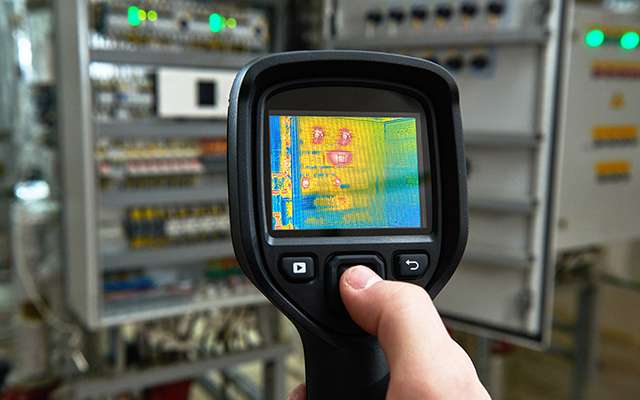When comparing nuclear and infrared methods for roof moisture surveys, there are several key differences to consider:
1. Principle of Operation:
-
Nuclear Method: Involves using a nuclear gauge that emits low-energy gamma radiation. This radiation interacts differently with materials depending on their moisture content. By measuring the backscattered radiation, moisture levels can be inferred.
Infrared Method: Uses infrared thermography to detect temperature differentials on the roof surface. Moisture affects the thermal properties of the roof, causing temperature variations that can be detected by an infrared camera.
2. Detection Depth:
-
Nuclear Method: Can measure moisture deeper into the roof layers, typically up to several inches depending on the material and conditions.
Infrared Method: Generally detects moisture close to the surface, typically within the top layers of the roof.
3. Accuracy and Resolution:
-
Nuclear Method: Provides quantitative measurements of moisture content but may require calibration and expertise to interpret accurately.
Infrared Method: Provides qualitative data based on temperature differentials, which are interpreted visually. It can detect areas of potential moisture but may not provide exact quantitative measurements without additional tools.
4. Safety and Regulations:
-
Nuclear Method: Involves handling radioactive materials and thus requires adherence to regulatory compliance.
Infrared Method: Non-destructive and important to obtain specialized, longer period of training. However, it requires appropriate conditions (temperature differentials) for effective detection.
5. Application Suitability:
-
Nuclear Method: Often used for deeper inspections and in situations where a more precise measurement of moisture content is required. Ability to test situations that Infrared cannot test (metallic coatings, ballast, slag).
Infrared Method: Suitable for rapid surveys of large roof areas, providing a quick assessment of potential moisture issues.
6. Cost and Accessibility:
-
Nuclear Method: Typically more expensive due to equipment costs, regulatory requirements, and specialized training.
Infrared Method: Generally more accessible and cost-effective for routine surveys and inspections.
In summary, the choice between nuclear and infrared methods for roof moisture surveys depends on factors such as the depth of moisture detection required, roofing materials, accuracy needs, safety considerations, and budget constraints. Each method has its advantages and limitations, so selecting the appropriate technique should be based on specific project requirements and conditions.
Call Atlantic Testing today or visit us online at www.atlanticleak.com

